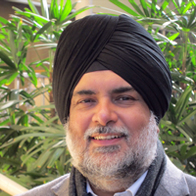The infamous Nirbhaya gang rape case in New Delhi on 16th December 2012, brought the issue of rapes and other crimes committed against women to the fore. Due to the media’s extensive coverage of this horrific crime there was a public outcry condemning this dastardly act. Never before had India witnessed such an outcry. Activists took to the streets in many parts of the world. The New Year’s celebrations that year were scaled down to a large extent, with the Indian armed forces and some clubs and hotels in Delhi cancelling their New Year parties.
The police was, for a change, quick to home in and apprehend the culprits, thanks to the CCTV footage from a private camera, complete its investigations and file the charge sheet. The accused went on trial in a fast-track court; on 8 July 2013, the prosecution finished presenting its evidence, including witness statements, the victim’s statement, fingerprints, DNA testing, and dental modelling. On 10 September 2013, the four adult defendants were found guilty of rape and murder and three days later were sentenced to death by hanging. The defendants appealed against their conviction in the High Court, but on 13 March 2014, The Delhi High Court upheld the guilty verdict and the death sentences. The matter is currently pending before the Supreme Court of India.
DNA evidence is playing a larger role both to convict the guilty and to exonerate those wrongly accused or convicted. DNA, or deoxyribonucleic acid, is the building block for the human body; virtually every cell contains DNA. The DNA in people’s blood is the same as the DNA in their saliva, skin tissue, hair, and bone. Importantly, DNA does not change throughout a person’s life.
DNA is a powerful investigative tool because, with the exception of identical twins, no two people have the same DNA. Therefore, DNA evidence collected from a crime scene can be linked to a suspect or can eliminate a suspect from suspicion. During a sexual assault, for example, biological evidence such as hair, skin cells, semen, or blood can be left on the victim’s body or other parts of the crime scene. Properly collected DNA can be compared with known samples to place a suspect at the scene of the crime.
However, here is the catch, In Nirbhaya’s case since the DNA evidence was matched with the DNA profiles of the accused, who by that time had been identified and apprehended, so it was easy to conduct this match. However, what if the convicts had not been identified and the police had to find the DNA match against anybody and everybody? They would’ve failed miserably as India does not have a national DNA database of known criminals yet, unlike the US where the cops have the facility to enter a suspect DNA profile from crime scene evidence into the FBI’s Combined DNA Index System (CODIS) to identify a suspect anywhere in the United States or to link serial crimes to each other. They even have a National DNA Index System (NDIS), which is a part of CODIS—at the national level—containing the DNA profiles contributed by federal, state, and local participating forensic laboratories. NDIS was implemented in October 1998. All 50 states, the District of Columbia, the federal government, the U.S. Army Criminal Investigation Laboratory, and Puerto Rico participate in NDIS.
USA’s DNA Identification Act of 1994 authorized the establishment of this National DNA Index. The DNA Act specifies the categories of data that may be maintained in NDIS (convicted offenders, arrestees, legal, detainees, forensic (casework), unidentified human remains, missing persons and relatives of missing persons) as well as requirements for participating laboratories relating to quality assurance, privacy and expungement. Unfortunately, we do not have such a law in India yet.
In this issue we have covered forensics, as an invaluable tool set to investigate crime. This is an area where a tremendous scope exists for industry development.
I hope you finding the readings in this issue useful for your professional requirements. Till we meet next, stay safe!
Cheers and happy reading!
G B Singh
Email: editor@securitytoday.in
Follow me on @EditorGB
Connect with me on Linkedin






